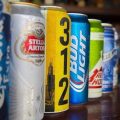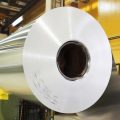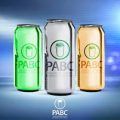The soft drinks sector expects to end 2021 with 5% growth, all thanks to the reactivation of the on-trade. This has been one of the main conclusions of the assembly of the Soft Drinks Association (Anfabra), which has recovered its fully face-to-face character and has had as its motto, ‘Time to Refresh’.
During this last assembly, Anfabra has taken stock of the evolution of the sector with optimistic forecasts for the end of the year. Consumption has recovered in 2021, especially from the second half of the year, with a forecast growth of 5% compared to the previous year. After the crisis caused by COVID-19, the progress in vaccination, the recovery of the hotel and catering industry and tourism, together with the good summer and autumn temperatures, have reactivated the demand for soft drinks.
Sara de Pablos, President of Anfabab and CEO of Suntory Beverage & Food Iberia, points out that the objective is “to mark the beginning of a new stage. We are moving in a complex context, with a demanding regulatory framework for the sector. We are emerging from the crisis caused by the pandemic, where the impact on the hospitality industry has affected us in particular, but we are a resilient, committed sector with a wide variety of products that are present at times of celebration and socialising”.
Following the trend of previous years, low- or no-calorie soft drinks continue to gain market share. Consumers are increasingly demanding these products and the industry is responding by expanding the options to choose from. This increase is across all flavours, and especially in sugar-free and zero-calorie cola, which grew by almost 27% compared to 2020.
The soft drinks industry is a benchmark when it comes to responding to consumer demands, making voluntary commitments and promoting healthy habits. Thus, between 2010 and 2020, the sugar put on the Spanish market from these beverages has been reduced by 38%. Spain is among the countries leading the way in sugar reduction, already exceeding the commitment to achieve a 33% reduction announced by UNESDA, the federation that brings together this industry in Europe, for the EU in 2025. In addition, 37 per cent of soft drinks marketed are low- or no-calorie and there is no advertising of soft drinks to children under 13 years of age.
As for packaging, 100% is recyclable or reusable, its weight has been reduced by 40% since 2000, and the use of recycled material has increased. For de Pablos, “sustainability is the key to successfully facing new challenges. We have made significant progress and now we are taking another step forward, in line with the United Nations (UN) Sustainable Development Goals for 2030”.














